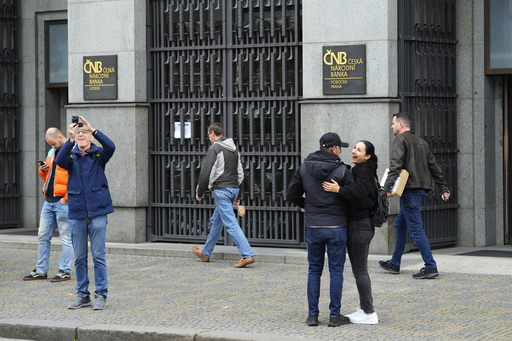
PRAGUE — The central bank of the Czech Republic has implemented another reduction in its key interest rate, responding to inflation levels that surpassed earlier expectations. This decision, made on Thursday, follows a period of maintaining the rate stable during their previous meeting in December.
The bank’s recent cut, anticipated by market analysts, reduced the interest rate by 0.25 percentage points, bringing it down to 3.75%. The decision to begin lowering borrowing costs was initiated on December 21, 2023, with an initial decrease of a quarter-point aimed at invigorating the economy. Further reductions took place subsequently, with half-point cuts enacted on February 8, March 20, May 2, and June 27 of the previous year. Additionally, smaller cuts of a quarter-point occurred on August 1, September 25, and November 7.
As per the preliminary data released by the Czech Statistics Office, inflation in January registered at 2.8% year-on-year. Although this represents a slight decrease of 0.2% from December, it remains above the analysts’ forecast of 2.6%. The central bank has set a target inflation rate of 2%.
In terms of economic growth, the Czech economy saw an increase of 1.0% in 2024 compared to the previous year, according to the Statistics Office. Meanwhile, the European Central Bank (ECB), responsible for setting interest rates for the 20 eurozone countries, reduced its benchmark rate by a quarter percentage point to 2.75% on January 30. Eurozone nations are currently facing challenges with growth as consumers, affected by inflation, approach spending with caution, and businesses grapple with political instability in key economies such as France and Germany.
Notably, the ECB’s decision occurred a day after the U.S. Federal Reserve opted to maintain its rates, highlighting the disparity between the robust growth observed in the U.S. economy and the stagnation in Europe, where there has been recorded zero growth at the end of the last year.

